The world’s most delicious breads, ranked
Bread winners
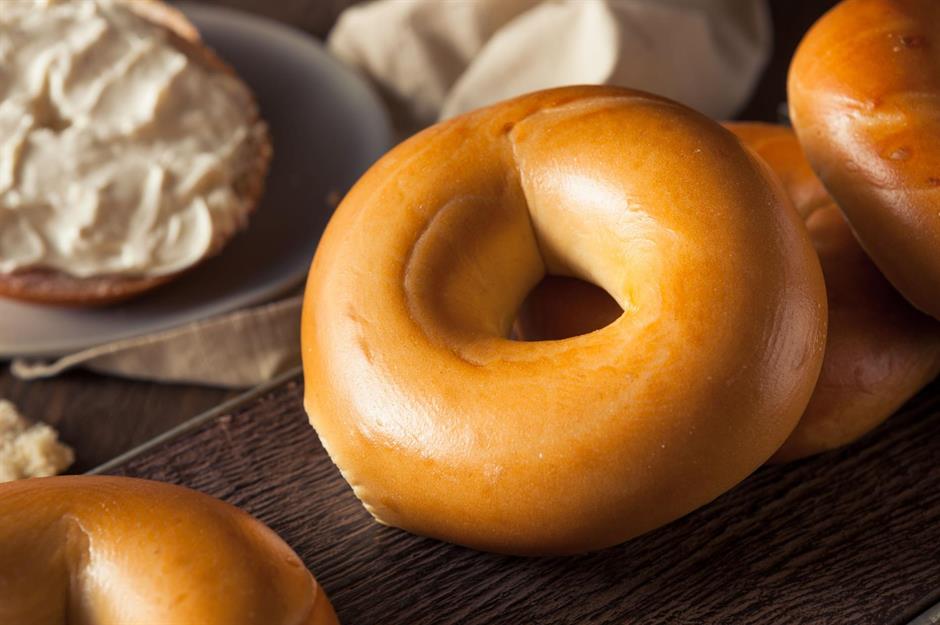
One of the world’s oldest and most-loved foods, bread holds a special place in the heart of nearly every cuisine across the globe. This endlessly versatile staple has so many amazing varieties to discover – some are baked, others are grilled or fried, but they’re all utterly delicious. From Australia’s doughy damper to Italy’s salt-flecked focaccia, India’s buttery naan and the iconic French baguette, we tour the globe for the upper crust of breads, counting down to the greatest of all.
Click or scroll through our gallery to discover the tastiest breads from around the world, counting down to the best of all – how many have you tried?
We've based our ranking on the enduring popularity of each bread in its place of origin and beyond, and on the opinions of our well-travelled (and well-fed) team. The list is unavoidably subjective.
33. Mielie bread, South Africa
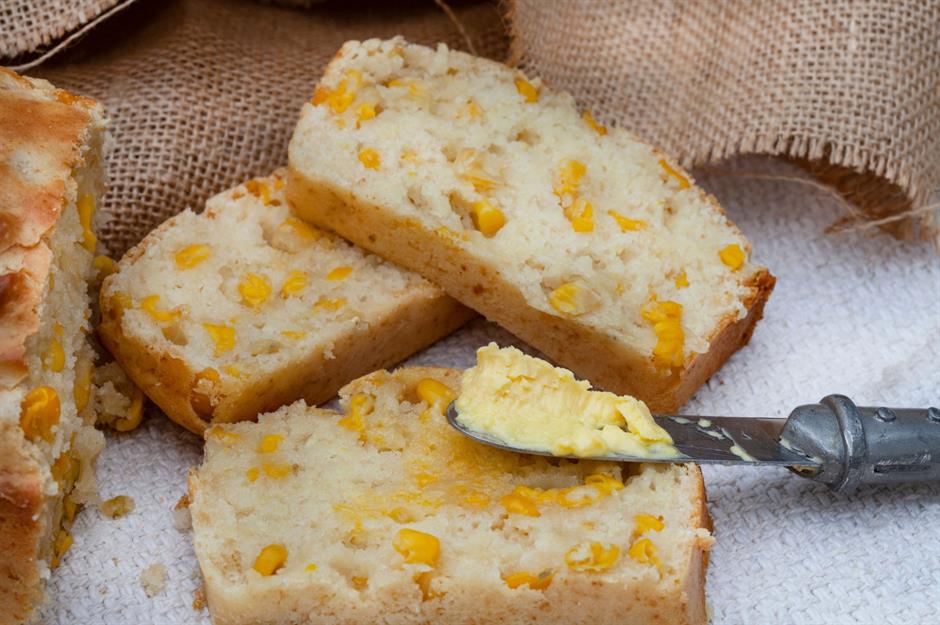
The term mielie in Afrikaans means maize and this moist cornbread is a popular South African staple, traditionally made by steaming the dough over a campfire rather than baking. Best served buttered and still warm, the bread is packed with whole kernels of corn, which provide zingy bursts of flavour. Mielie bread is often eaten during braais (barbecues) and its sweetness pairs well with grilled meats, though it’s also ideal for dipping in a hot bowl of soup or hearty stew.
32. Grissini, Italy

Grissini, also known as breadsticks, are a traditional Italian snack originating from the Piedmont region, particularly Turin. These long, thin and crispy snacks are known for their light and crunchy texture, and are a classic appetiser in Italian restaurants around the world. Grissini are believed to have been invented in the 17th century. The story goes that a baker named Antonio Brunero created them at the request of the Duke of Savoy, Vittorio Amedeo II, who had stomach issues and needed easily digestible food. Grissini's light and crispy texture made them perfect for this purpose.
31. Arepa, Colombia and Venezuela
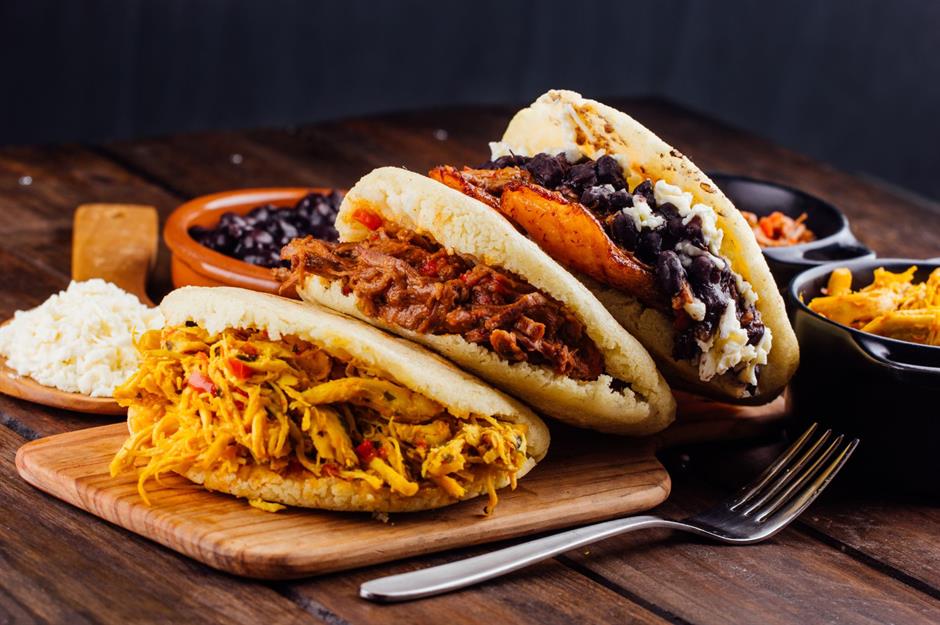
A staple in Venezuela and Colombia, arepas are versatile cornmeal buns made with unleavened dough that can be either grilled, baked, fried, boiled or steamed. Although they can be eaten at any time of day, they’re particularly popular served for breakfast stuffed with everything from avocado and scrambled eggs to refried beans, shredded meats and cheese. There are numerous regional variations of arepas – some are thicker and used as sandwich bread, while others are thinner and used as a base for other toppings.
30. Injera, Eritrea and Ethiopia
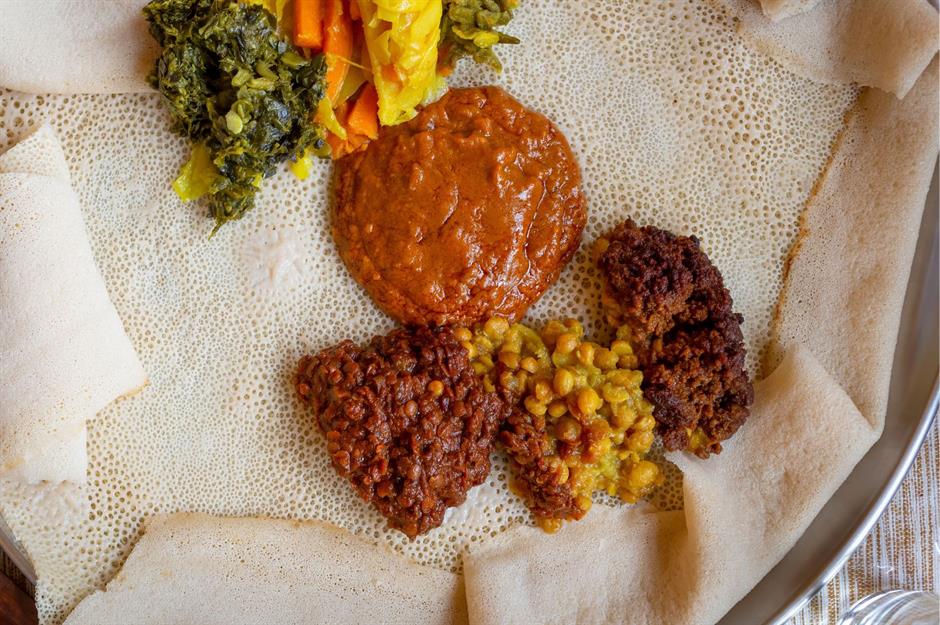
These unique, fermented, pancake-like flatbreads are served at nearly every meal in Ethiopia and Eritrea, often used to scoop up food and mop up all the sauces from stews and curries. Injera are made from teff, a unique, millet-like grain that's an essential ingredient in the cuisines of these two East African countries. They’re known and loved for their slightly sour taste and spongy texture.
29. Knäckebröd, Sweden
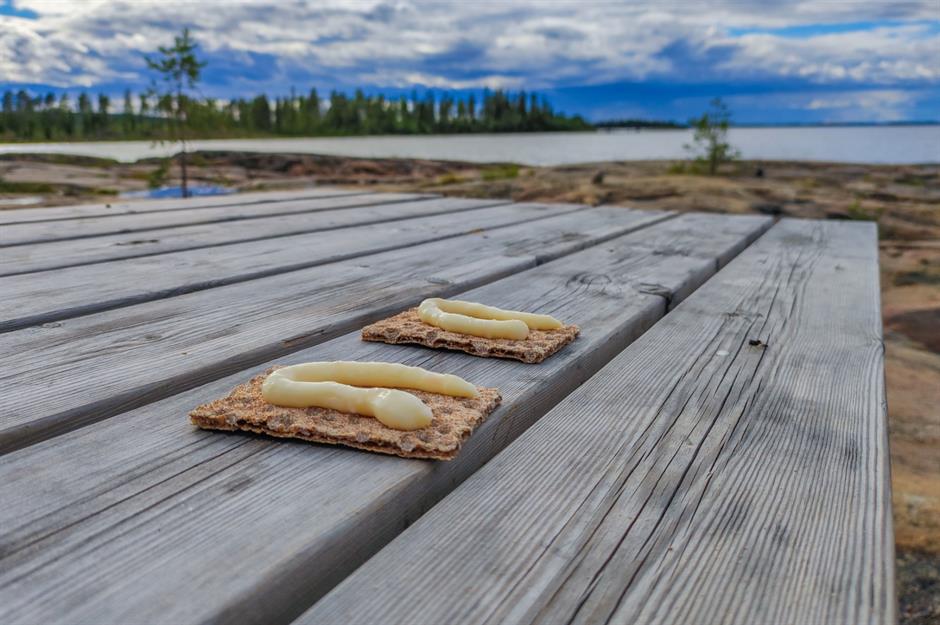
Translating as ‘break bread’ and dating back to AD 500, knäckebröd was originally made with a hole in the centre so that it could be threaded and stored on long sticks hung from the ceiling. This flat, dry type of bread or cracker is made mainly from rye flour, but can also contain wheat, grains and spices. Rich in fibre, it's traditionally served in Sweden with cheese and herring, but can be topped with whatever you fancy.
28. Rēwena bread, New Zealand
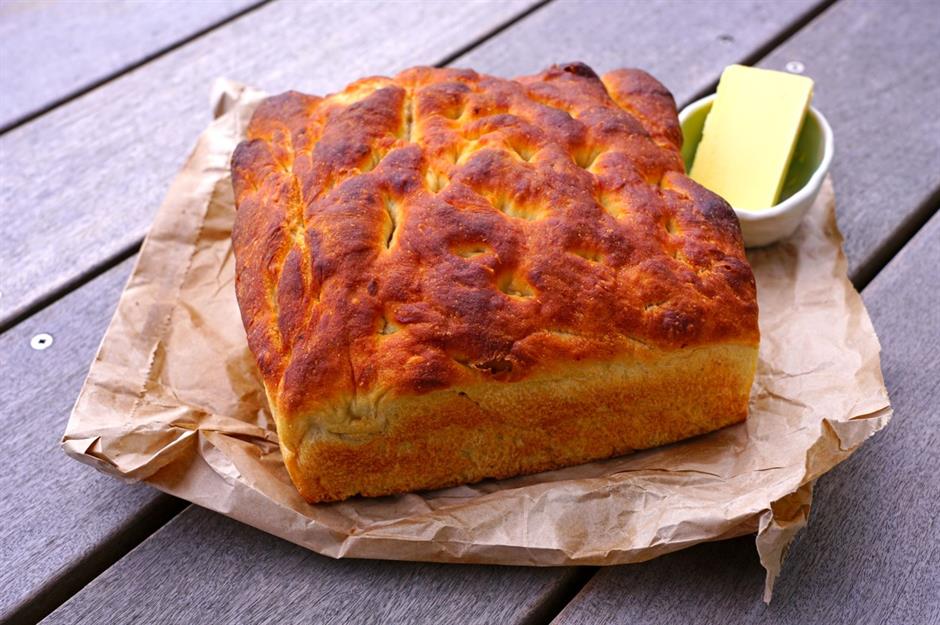
Rēwena (or Māori) bread is a kind of sourdough with a unique texture and tangy flavour. This stems from the fermentation of the potato starter, referred to as a ‘bug’, which takes several days. Despite the lengthy preparation time, Rēwena bread is a labour of love in many Māori households, often served during family gatherings and special events. Regarded as a culinary symbol of Māori culture, it celebrates community and sharing.
27. Brioche, France
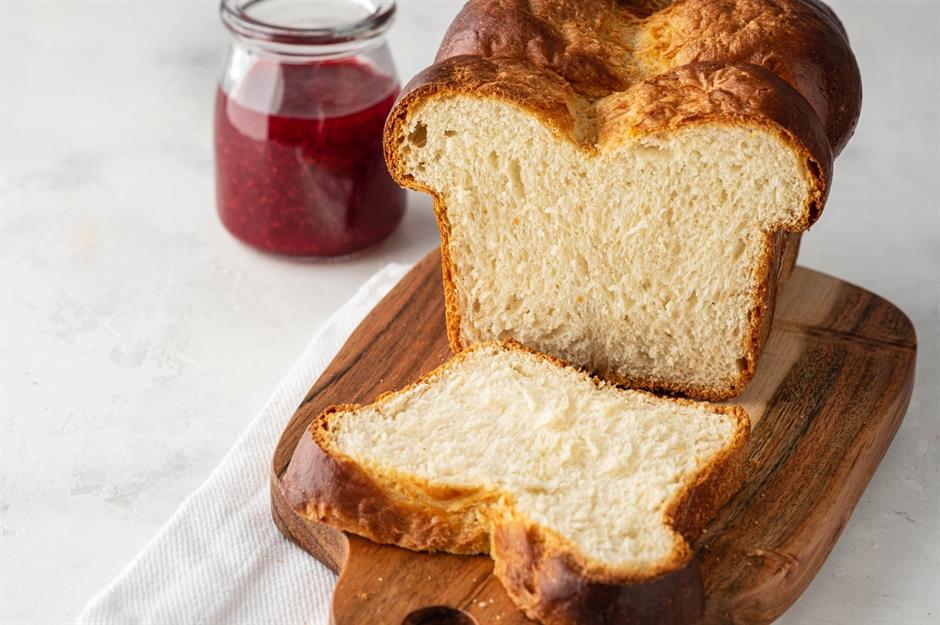
While you might find one of these shiny golden buns sandwiching a burger patty these days, the brioche has a longer history than you might think; this ultra-soft bread is believed to originate in Normandy, dating as far back as the 15th century. Bridging the gap between bread and pastry, a classic mix includes not only flour, yeast, water and salt, but also incorporates eggs, butter, sugar and milk. The result is a pillowy bread with a touch of sweetness. It’s usually made into a loaf or baked into rolls, and can be served either sweet or savoury.
26. Khameer flatbread, UAE
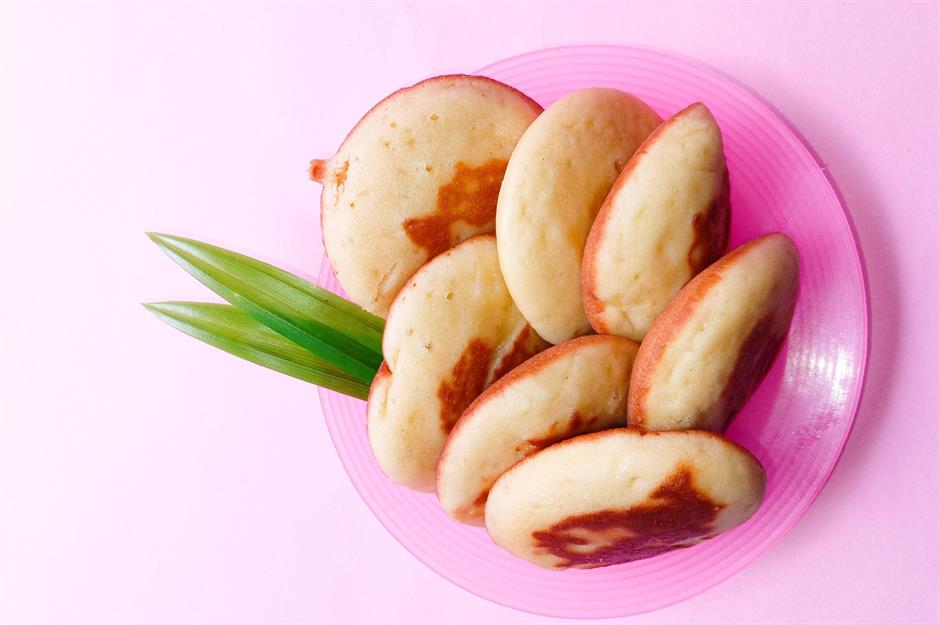
Also called Emirati khameer, this flatbread is made with a soft and pillowy dough, which is sometimes topped with sesame and black cumin seeds. Date water, milk and cardamom are also commonly added to create a slightly sweet, nutty flavour. It's from ancient origins, but these days many Emirati homes will now have a special khameer maker to bake their bread, which is best eaten when still warm. Popular for breakfast, it’s often served with mezze platters of cheese, vegetables, hummus or baba ganoush, but it’s a favourite at any time of day.
25. Damper, Australia

This rustic bread was traditionally prepared by early European settlers and bushmen, who cooked it over the glowing embers of a campfire. In the outback it's still cooked in the same way, but it can also be baked in contemporary kitchen ovens. Best served warm, the bread is a simple affair made with flour, water, a sprinkling of salt, sometimes milk and baking soda for leavening. Damper is typically dense with a crusty exterior and a soft, crumbly inside, and is a must-try for anyone wanting to experience authentic outback cuisine.
24. Bannock, Canada

Deriving from the Gaelic bannach, meaning ‘morsel’, it’s believed that Scottish settlers introduced bannocks to the indigenous peoples of North America, including the Inuit and Mi’kmaq, during the 18th and 19th centuries. The Scots cooked the bread (a simple combination of flour, water and fat or lard) in a griddle called a bannock stone, which was placed in front of a fire. A First Nations favourite at powwows and festivals, bannocks are now also revered on Canada's restaurant scene.
23. Pumpernickel, Germany
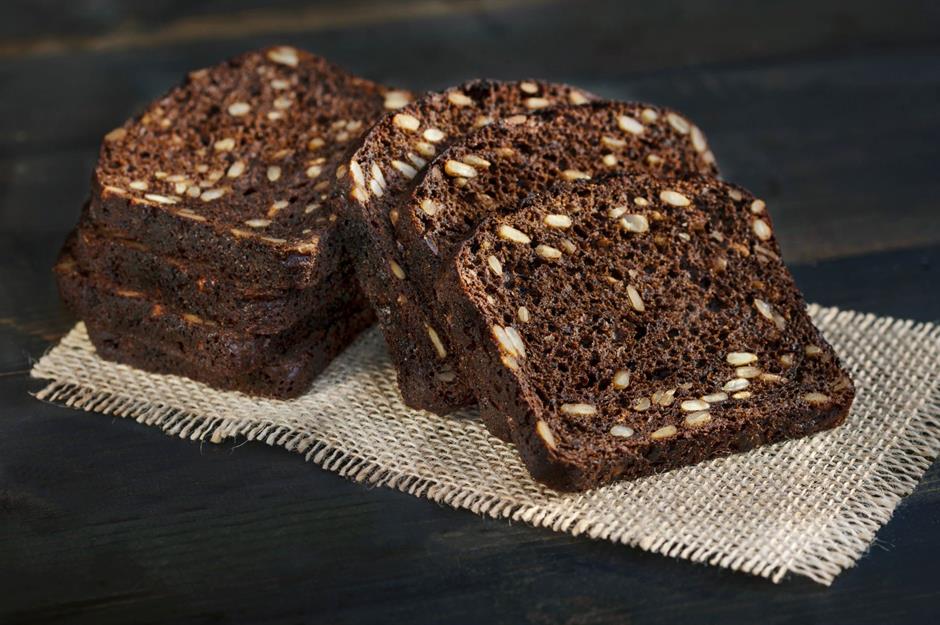
Originating in Westphalia, Germany, this dense, coarsely ground rye loaf has an amusing history. The name pumpernickel is thought to stem from the German phrase pumpern (meaning to break wind), while nickel is a form of the name Nicholas, which in German folklore was associated with a mischievous or malevolent goblin or demon. Varieties are also popular in the Netherlands, where it is known as Fries roggebrood as it was first made in the Dutch province of Friesland.
22. Pane carasau, Italy
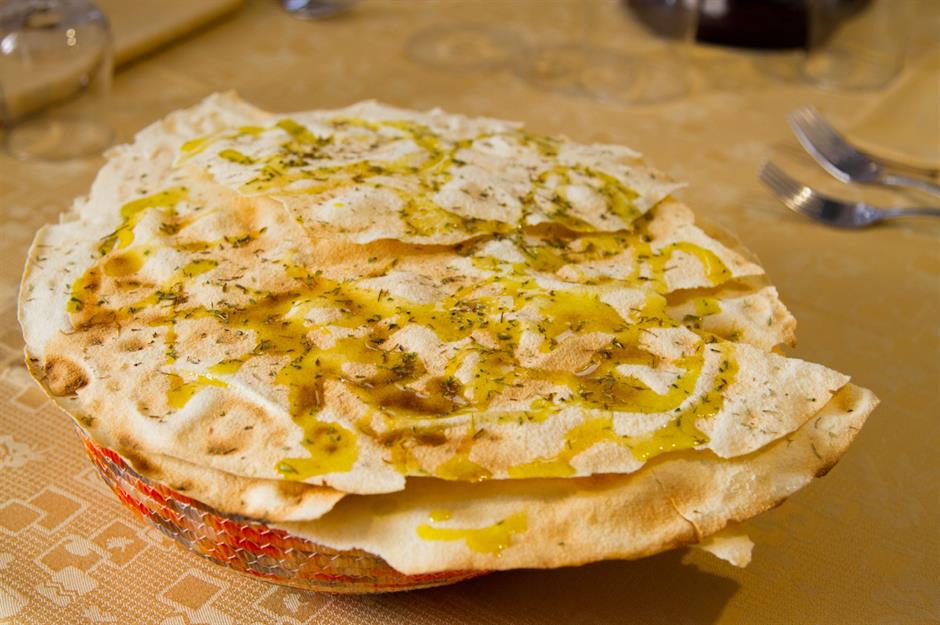
Historically, this Sardinian flatbread was a staple of shepherds as it lasts for months if kept dry. Crispy and paper thin, the bread has the nickname carta di musica (translated as 'music sheets') because it's said to be so thin before cooking that a sheet of music can be read through it. Made from durum wheat, salt, yeast and water, the bread gets its name from the double toasting (called carasadura) that it receives in the oven. Seasoned with aromatic rosemary and sea salt, it’s ideal for snacking and sharing when snapped into smaller pieces.
21. Broa, Portugal
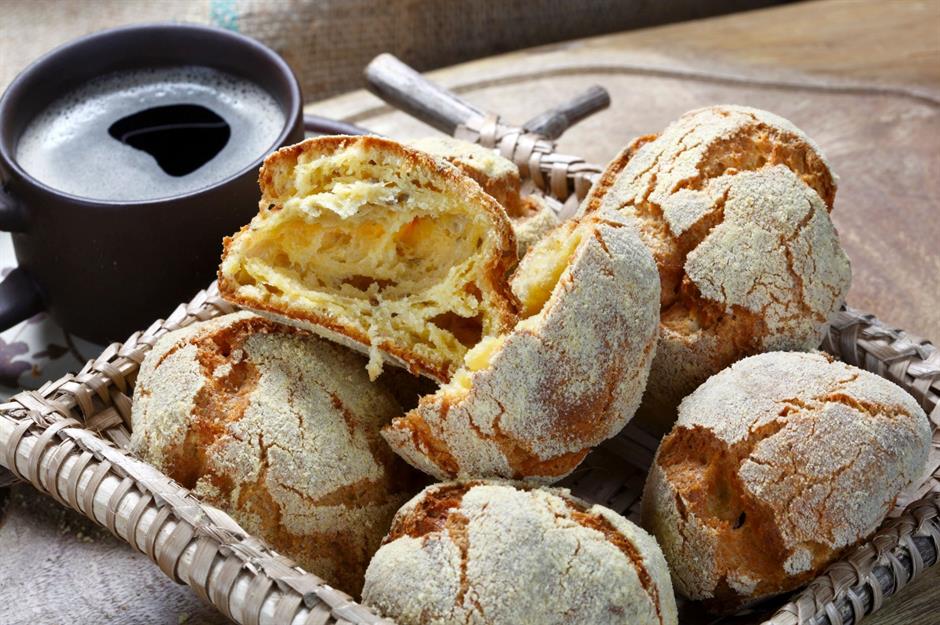
Crowned by a characteristic cracked hard crust and considered a national treasure in Portugal, broa de milho (or cornbread) dates back centuries. When corn was first introduced to Europe from the Americas, it soon became a staple ingredient for Portuguese bread making. The dough is traditionally shaped in round loaves and scored with a cross on top which helps the bread expand when rising. It’s enjoyed with both savoury or sweet toppings such as cheese, olive oil or honey.
20. Korovai, Ukraine
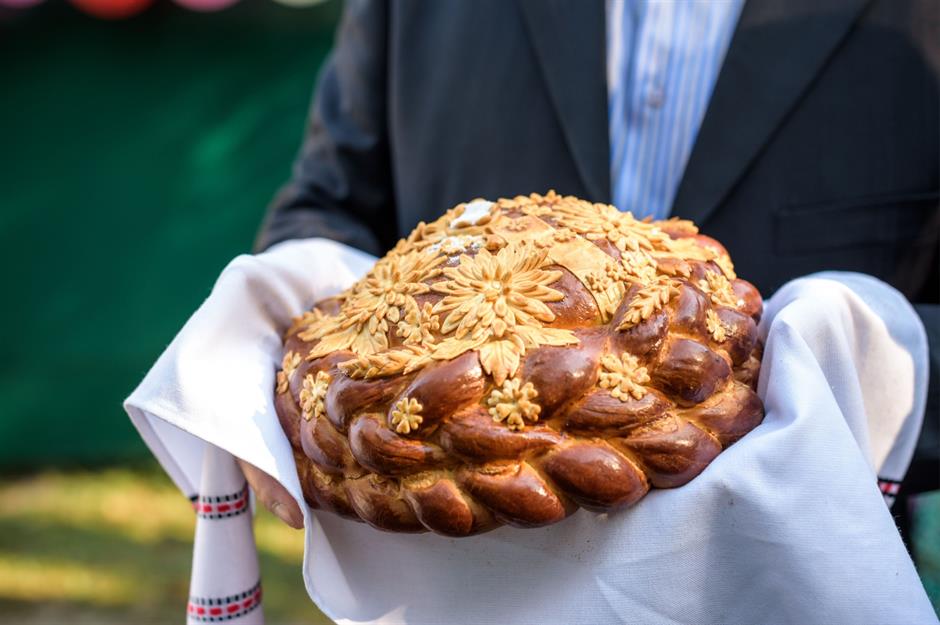
The beautifully decorated korovai is a traditional Ukrainian wedding bread that's baked instead of cake for marriage ceremonies. It's filled with symbolism and superstition – traditionally only women who are happily married can take part in baking this show-stopping loaf. The higher the bread rises and the more elaborate the decorations are, the happier the marriage is predicted to be, but if the bread cracks in the oven, it’s not a good omen for the bride and groom!
19. Obwarzanek Krakowski, Poland
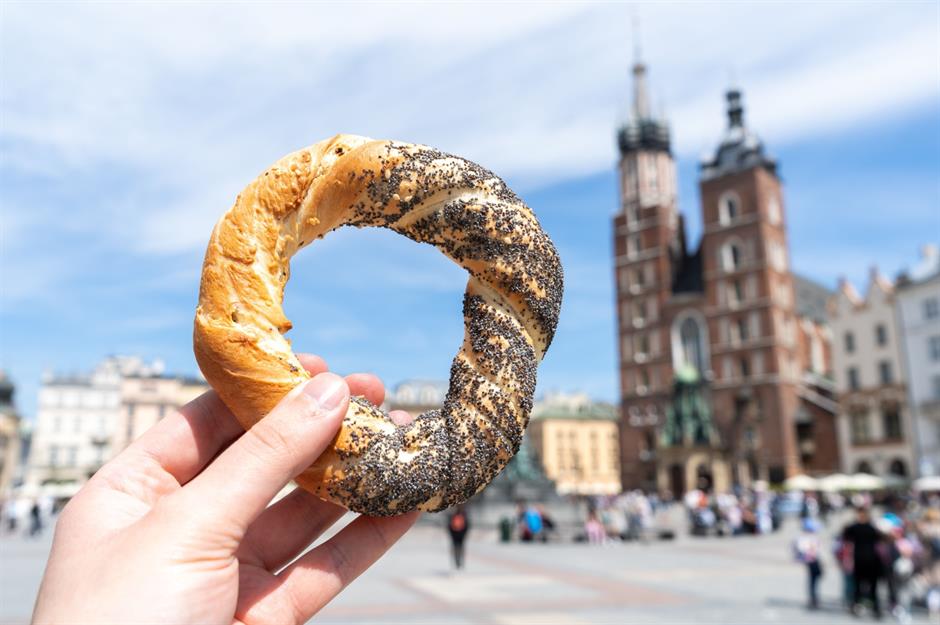
Bread is vitally important in Polish culture as a sign of hospitality – in fact, visitors and newlyweds are traditionally greeted with salt and bread. The huge variety of bread available in the country is a matter of pride amongst Polish bakers, but one of the most iconic is the obwarzanek Krakowski, otherwise known as the Krakow bagel or pretzel. Bigger than normal bagels and topped with poppy or sesame seeds, they’re a must-have from street stalls and bakeries in the city.
18. Paratha, India
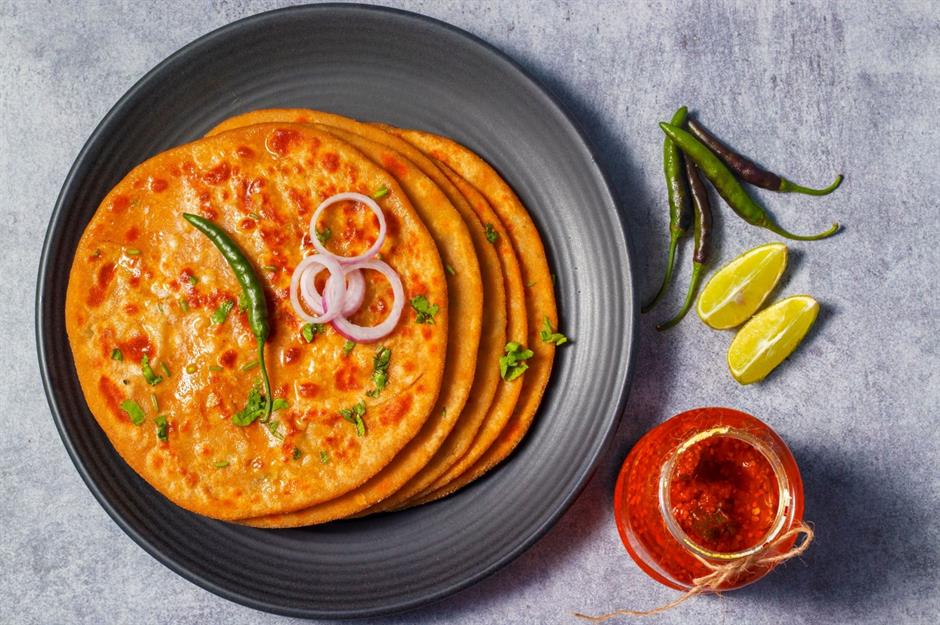
A wildly popular curry accompaniment, this unleavened flatbread boasts light, flaky layers that are folded over with ghee and pan fried. Crispier and heavier than chapatis, parathas are often stuffed with vegetables or paneer cheese, making them filling enough to be eaten as a main meal along with some dahl or mango pickle. The exact origins of paratha are difficult to pinpoint, but it is believed to date back to ancient India. The tasty street food quickly spread throughout the Indian subcontinent and is now enjoyed globally.
17. Focaccia, Italy
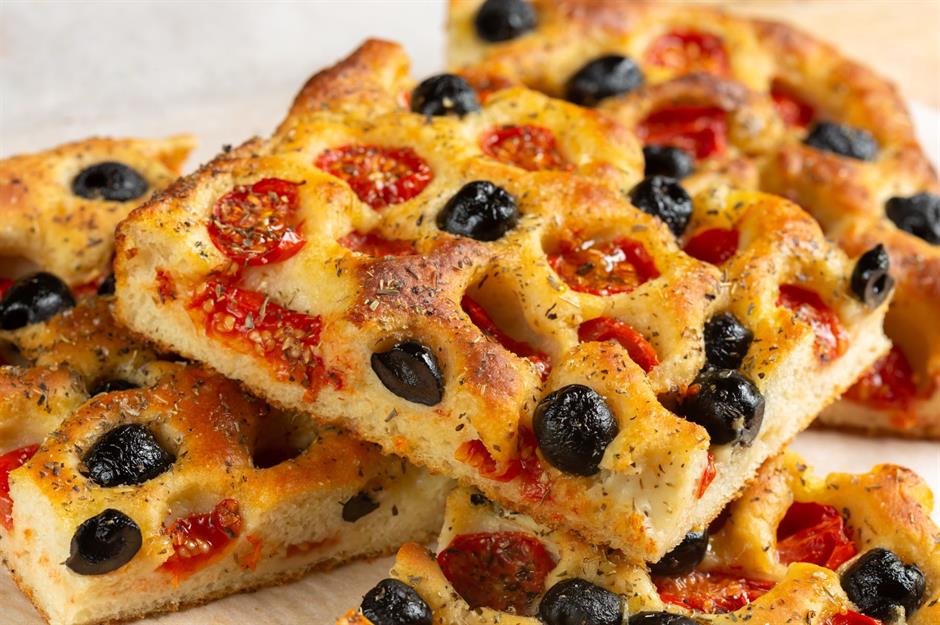
The name focaccia is derived from the Roman panis focacius, meaning ‘hearth bread’, as it was traditionally baked over coals. Often sprinkled with sea salt or topped with olives, fresh rosemary or cherry tomatoes, focaccia is a flat, oven-baked Italian bread made of strong, high-gluten flour, oil, water, salt and yeast. Perfect for sandwiches or as a base for pizza, it’s usually served warm with a glug of olive oil.
16. Manakeesh, Middle East
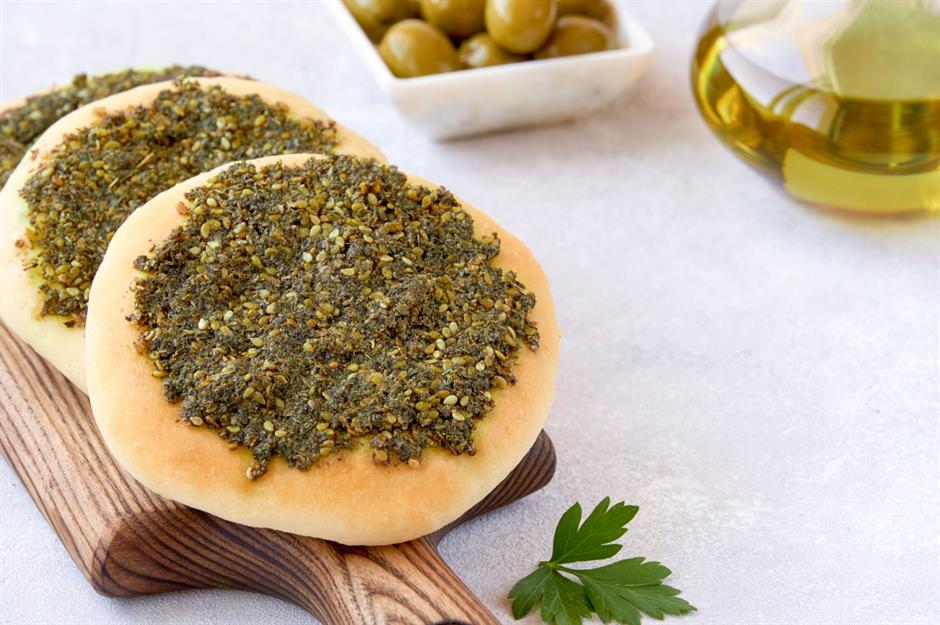
Manakeesh (or manakish) is a flatbread commonly enjoyed in countries including Palestine, Lebanon, Syria and Jordan. Covered with a mix of za'atar spice blended with extra virgin oil, it’s typically baked in a wood-fired or conventional oven until the dough is crisp. Best served straight from the oven, it’s popular at breakfast time or as a snack, sometimes with additional toppings such as cheese and fresh vegetables, or drizzled with lemon juice.
15. Submarine roll, USA
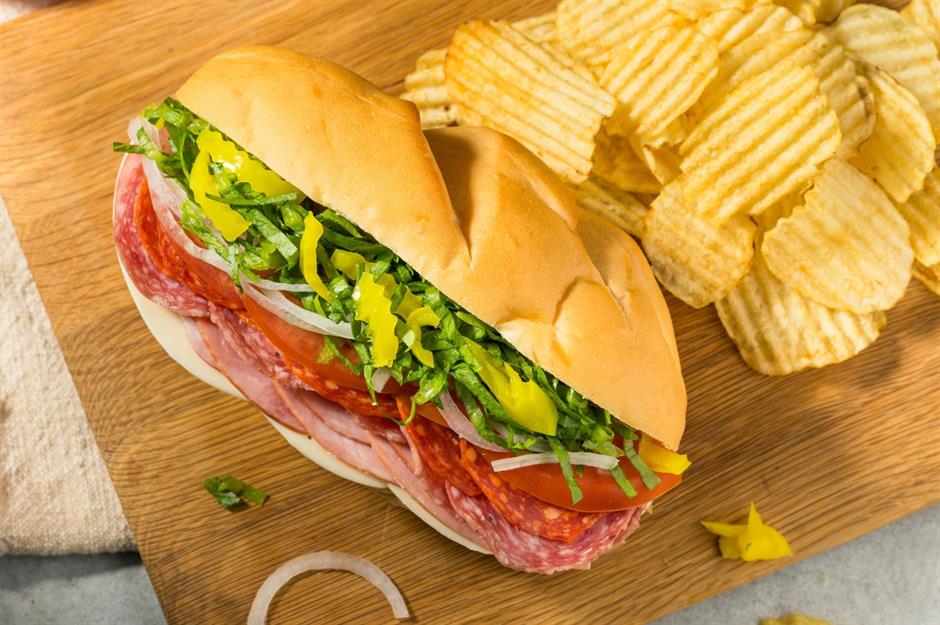
Also known as grinders, heroes or hoagies depending on where you are in the US, subs are among America's favourite sandwiches, dating back to the 1920s. While it’s the endless variety of fillings available that tend to get people excited, ranging from saucy meatballs to layers of charcuterie and cheese, the bread itself is the most essential component. The perfect roll should have that all-important submarine shape with a texture that’s perfectly balanced between fluffy, chewy and crispy. It should also be robust enough to hold all those lovely fillings.
14. Pupusa, El Salvador
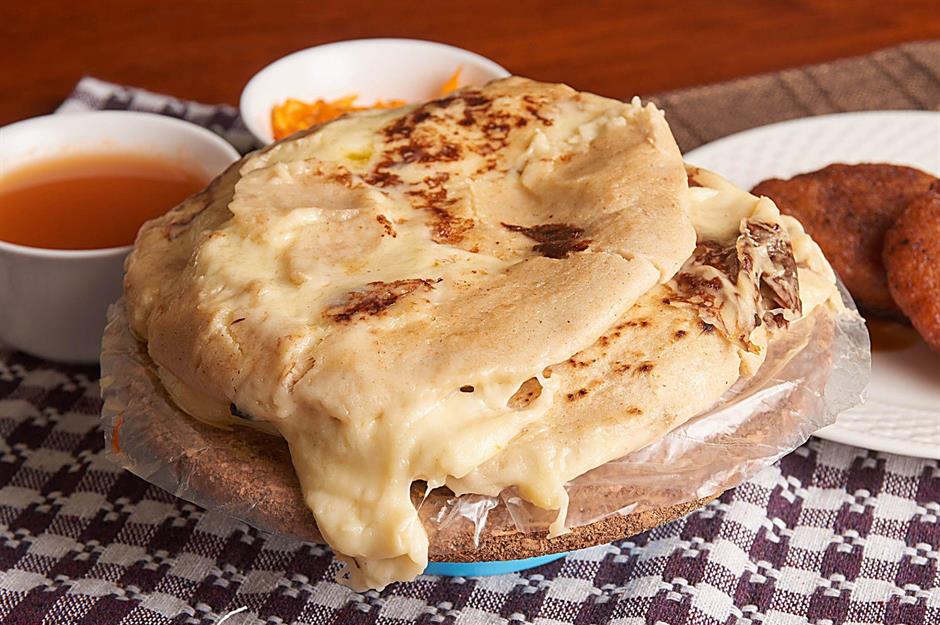
This mouth-watering stuffed bread is so popular in El Salvador, it has its very own national day. A popular street food served from stalls and carts all over the country, pupusa is a thick flatbread made from cornmeal or rice flour, which is then stuffed with cheese or refried beans, and traditionally accompanied by a fermented cabbage slaw. Crispy on the outside and soft and doughy on the inside, it's utterly irresistible.
13. Soda bread, Ireland

A first-time baker’s favourite as it’s so easy to make, soda bread doesn’t contain any yeast, so there is no kneading or rising required to make it. Its humble beginnings date back to the 19th century when Ireland faced widespread famine, leading to a shortage of baking ingredients like yeast. Resourceful cooks turned to baking soda and buttermilk instead for leavening, thus soda bread became a symbol of the ingenuity and resilient spirit of the Irish people.
12. Pretzel, Germany
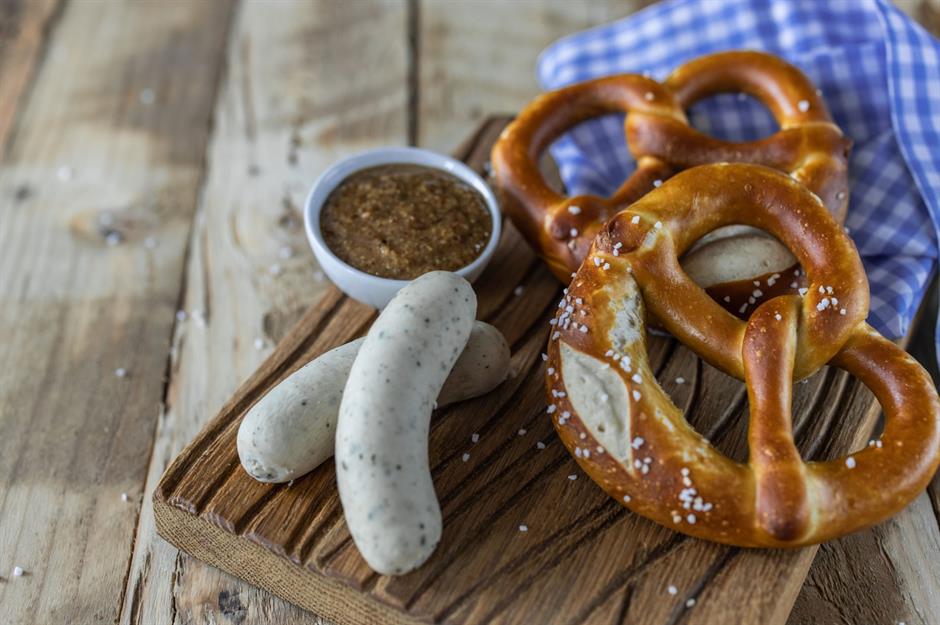
An iconic culinary symbol of Germany, pretzels are made by twisting a rope of dough into the shape of a loose knot. Briefly boiled before being glazed with egg, salted and baked, they have a glossy, dark brown crust and soft, chewy interior. The soft pretzel is a popular street food, sold hot, often with mustard, cheese or butter and paired with weisswürste, a white Bavarian sausage. A favourite beer snack, they’re also traditionally served at Oktoberfest.
11. Challah, Israel
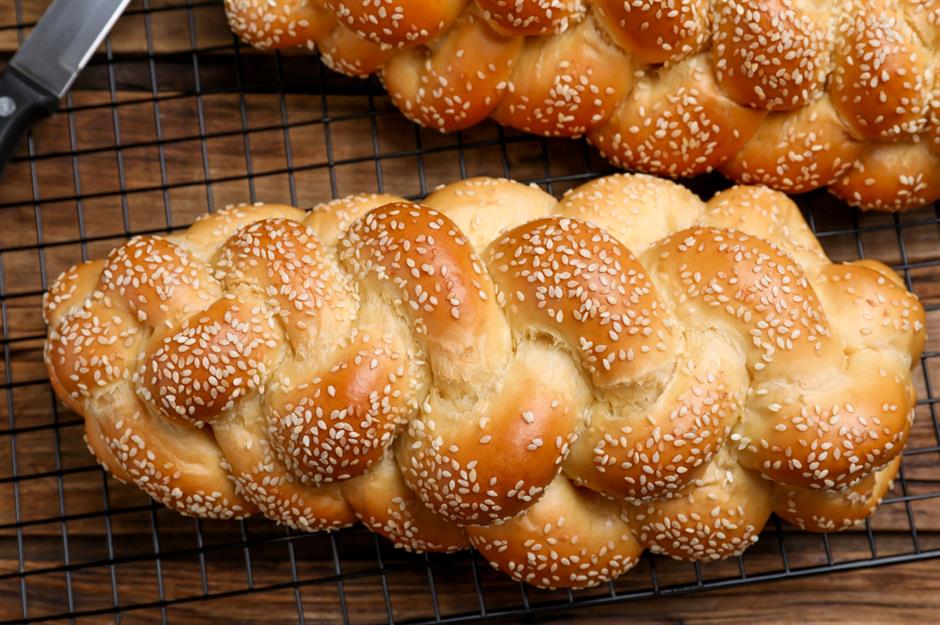
This rich and indulgent bread hails from the biblical era; the legend goes that the Israelites separated a portion of dough as a challah offering to priests. This evolved into the custom of baking the special bread for the Jewish Sabbath and holidays. Made with eggs, flour, yeast, sugar and salt, it is plaited, symbolising love because it looks like arms intertwined. It’s also known as berches in Central Europe.
10. Shokupan, Japan

Japanese milk bread or shokupan is one of the softest, squishiest loaves in the world. The Japanese refer to the billowy white bread as fuwa, fuwa, or ‘light and fluffy’. It is typically baked in a rectangular loaf pan with straight sides, resulting in a square-shaped loaf with a flat top that's perfect for sandwiches, particularly the famous tamago sando egg sandwich. Shokupan is a staple in Japanese households and bakeries, and its popularity has also grown internationally in recent years.
9. English Muffin, England, UK
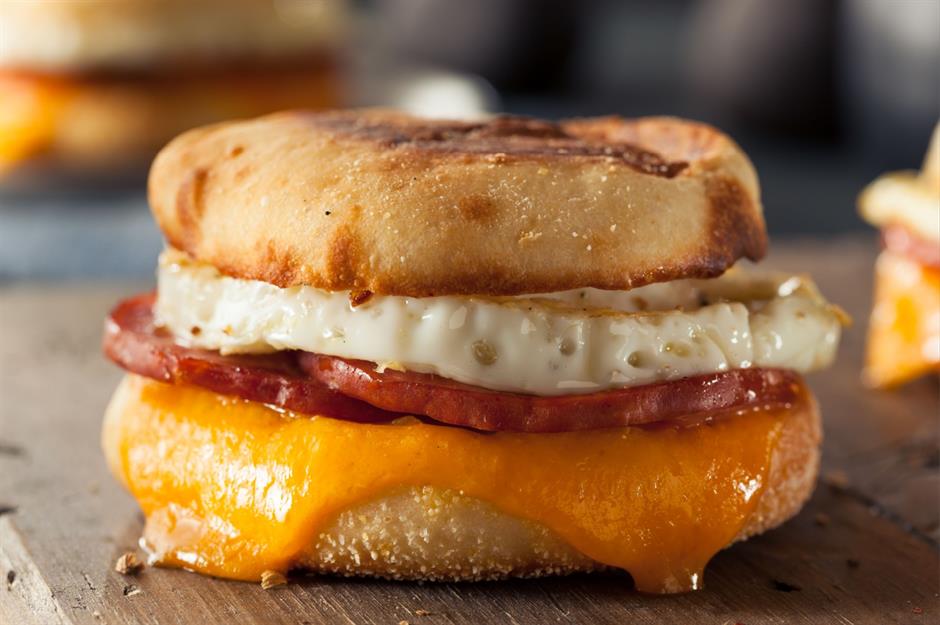
Nothing like its more cake-like American counterpart, an English muffin is a small, round, flat type of yeast-leavened bread that's often toasted and buttered. A breakfast favourite, they’re also an essential ingredient of eggs Benedict, topped with poached egg, Canadian bacon or ham and hollandaise sauce. Their popularity grew in London during the 19th century when they were sold door to door by ‘muffin men’, hence the nursery rhyme.
8. Chapati, India
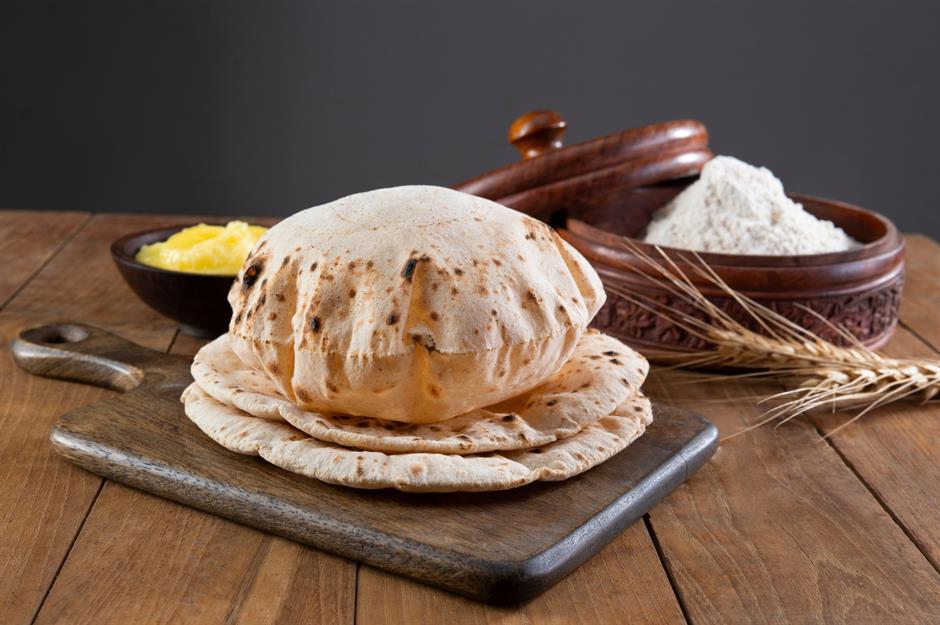
So simple, but so versatile, these thin Indian flatbreads not only make an ideal accompaniment to curries, but are great for wraps, too. There are only three ingredients: a finely milled wholewheat flour called atta, water and ghee. Shaped by slapping the chapatis between the palms of the hands, they’ve been a staple in Indian homes for centuries, but are loved all over the word.
7. Pitta, Greece, Middle East
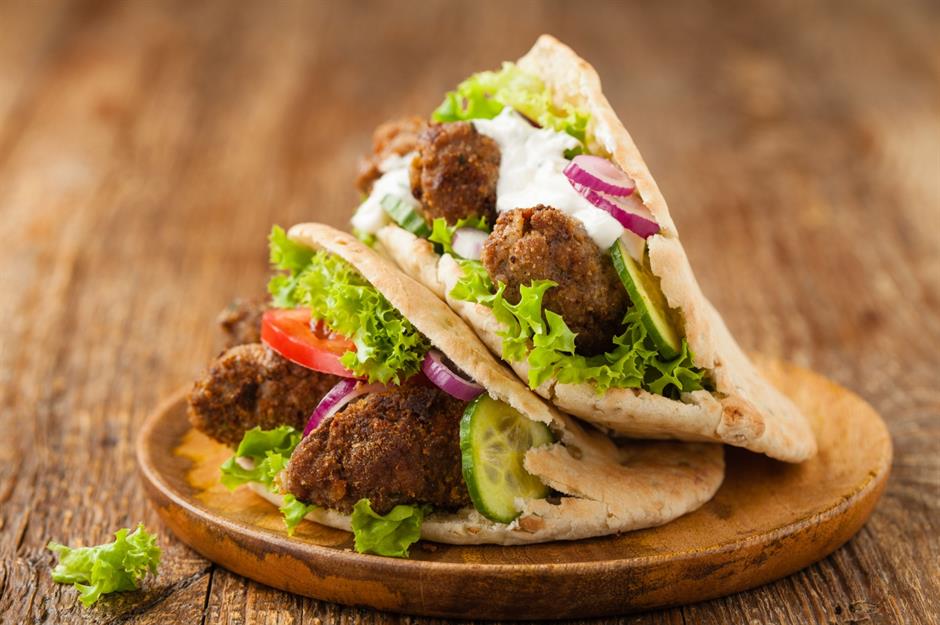
Pitta or pita originated in the Middle East over 4,000 years ago, making it one of the oldest breads in the world. While in many Arab countries it’s called khubz, it was the ancient Greeks that first named this flatbread ‘pitta’. Much loved worldwide, its versatile interior pocket is delicious stuffed with grilled meats as a souvlaki wrap or for dipping into hummus or tzatziki.
6. Mantou, China
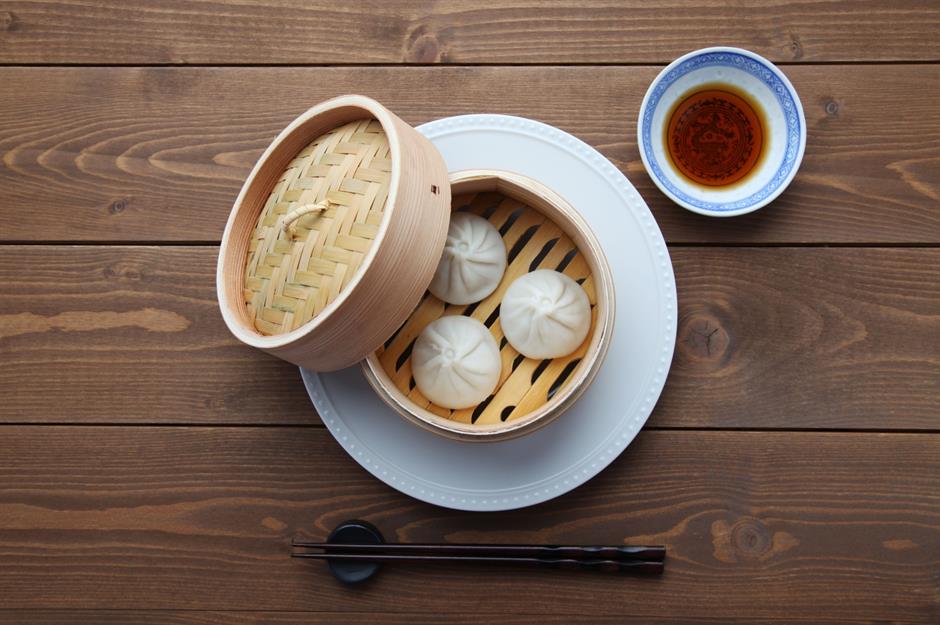
Mantou, or steamed buns, are a Chinese staple, especially in the northern, wheat-growing regions. Popular street food snacks, mantou are usually eaten steamed and plain, while bao are the stuffed versions, with fillings like char siu roast pork, minced meat or tofu. They are distinctive for their soft, bouncy and fluffy texture and mild, slightly sweet flavour.
5. Bagel, Canada, Poland, and USA
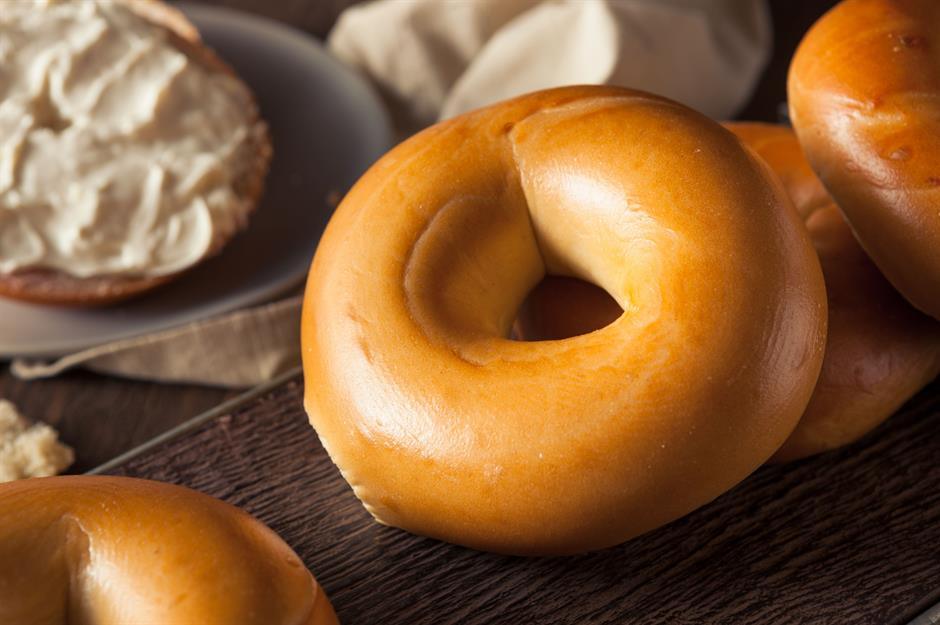
Bagels originated in the Jewish communities of Poland, but have now been adopted around the world, particularly in the US and Canada. The traditional bagel is poached before being baked, sometimes with added flavours such as cinnamon, raisin, blueberry and sesame seeds. New York City is famous for its bagels, where the traditional filling is smoked salmon and cream cheese, but they’re also popular simply toasted and buttered. In Canada, the Montreal-style bagel is denser and thinner than a New York bagel, and is dipped in boiling honey water before baking for a golden exterior and a notably chewy crust.
4. Tortilla, Mexico

Tortillas date back thousands of years to ancient Mayan and Aztec civilizations. When the Spanish arrived in Central America in the 16th century, they discovered that the indigenous people ate bread made from a cornmeal dough called masa; the name tortilla comes from the Spanish word for ‘little cake’. When wheat flour was introduced to the Americas from Europe, flour tortillas became popular and now they’re enjoyed all over the world, served with fajitas, burritos or as wraps.
3. Ciabatta, Italy
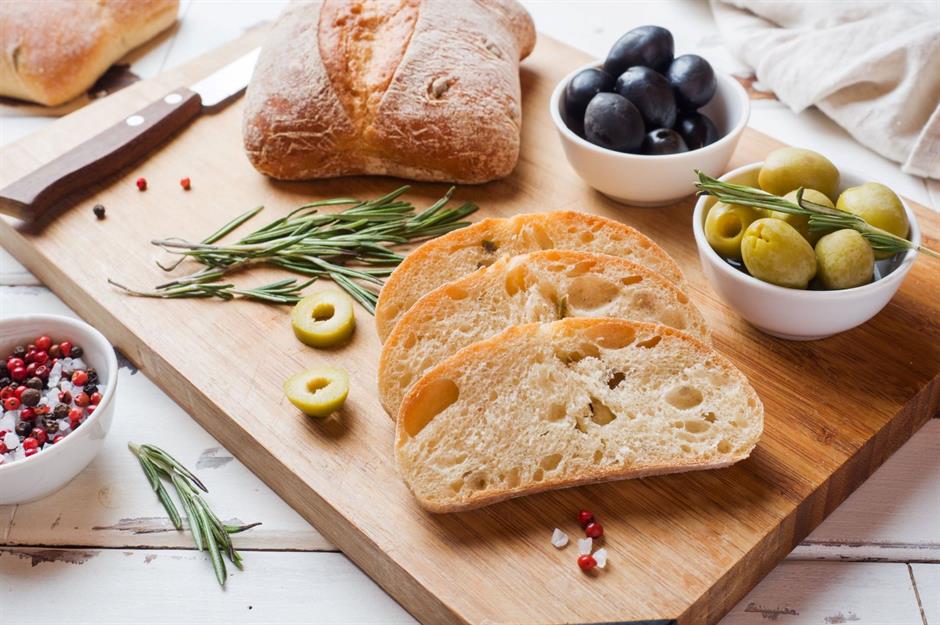
Amazingly, this iconic Italian bread was created relatively recently in 1982 by Arnaldo Cavallari, a baker from the Veneto region, who wanted to make an alternative to the French baguette that was dominating the European market at the time. He named the bread ciabatta, which means slipper in Italian, due to its elongated shape. With its light and airy texture, the bread quickly became a hot favourite, not just in Italy, but in homes worldwide.
2. Naan, India
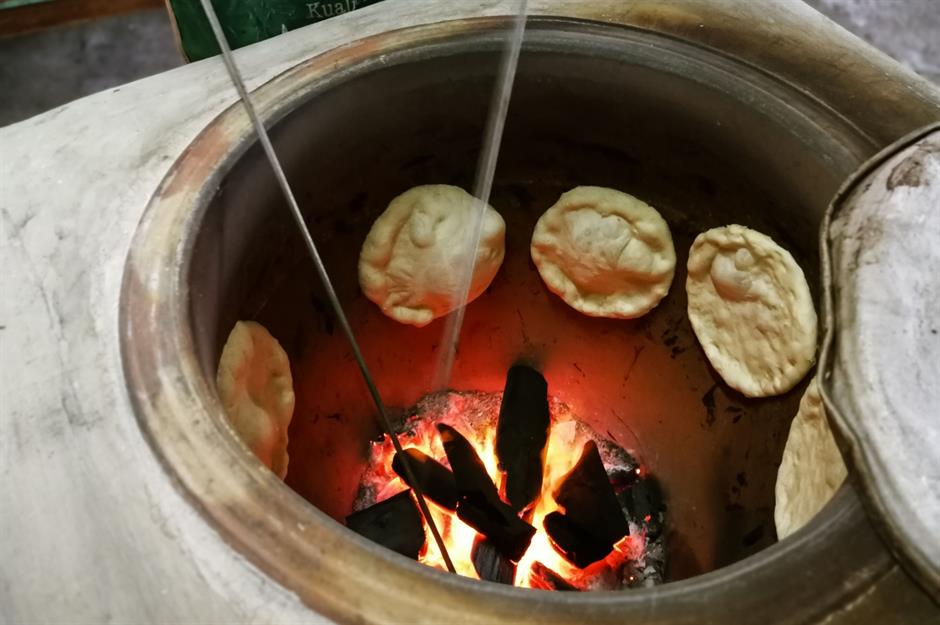
Characterised by its light and slightly fluffy texture and distinctive golden-brown spots from the cooking process, naan is a favourite flatbread that’s often served as an accompaniment to curries and Indian dishes. It’s made with white flour, eggs, yeast, milk, salt and sugar, and is sometimes topped with garlic, coriander, dried fruit, almonds and coconut. The best versions are cooked in a traditional tandoor oven, but the bread can also be baked or fried on a griddle pan at home.
1. Baguette, France
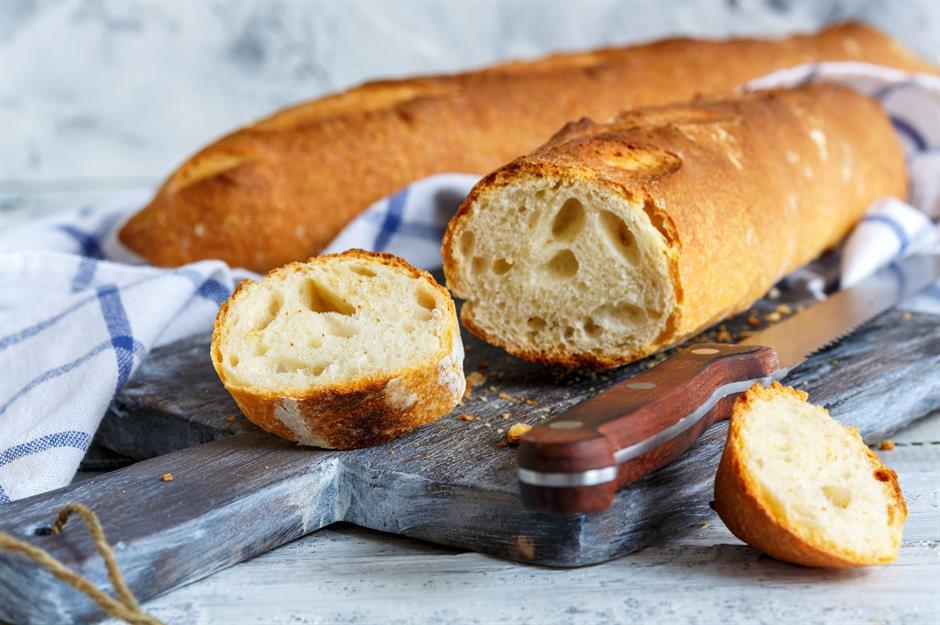
An iconic image of France and one of the world’s most adored breads, the rustic baguette is a long, thin loaf that’s characterised by a crisp, golden brown crust and chewy centre. Traditionally served simply with mounds of butter and ham in a classic jambon beurre sandwich, the baguette is at its very best served as fresh as possible. The loaf’s invention dates back to the 1920s, when a French law was introduced that prohibited bakers from working before 4am, making it difficult to prepare traditional round loaves in time for breakfast. This led to the popularity of the baguette, which could be prepared more quickly.
Comments
Be the first to comment
Do you want to comment on this article? You need to be signed in for this feature
Most Popular
Reviews 31 unbelievably sugary cereals from around the world